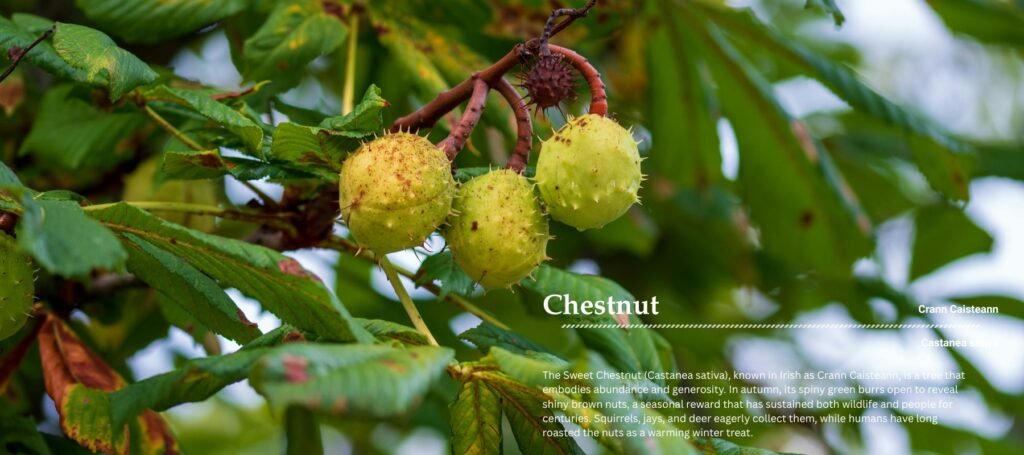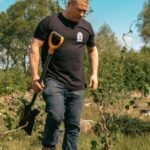A Changing Beauty Through the Seasons
In spring, the Sweet Chestnut transforms again. Its long, pale catkins hang gracefully from the branches, attracting bees and other pollinators in search of nectar. As summer arrives, its broad, serrated leaves create a dense green canopy that cools the ground beneath. The shade it casts offers refuge to smaller plants and animals, maintaining a moist and sheltered forest floor.
With each season, the Chestnut shifts its role. In summer it is a provider of light and shade, in autumn it becomes a source of nourishment, and in winter it stands as a sturdy, reassuring presence in the landscape.
A Living Link with Irish Heritage
Although not native to Ireland in the ancient sense, the Sweet Chestnut has been a familiar part of the Irish countryside for many centuries. It was introduced long ago and quickly found a place in our woodlands, estates, and village greens. Its timber, both strong and flexible, became a favourite for fencing, furniture, and building work.
Over time, the Chestnut became woven into Irish rural life. Its steadfast growth and long lifespan made it a symbol of endurance and legacy. Some trees have lived for over three hundred years, bearing witness to generations passing beneath their branches.
An Ecosystem in Itself
For wildlife, the Chestnut is a complete home. Its flowers feed bees and insects, its nuts sustain mammals and birds, and its branches provide shelter for nesting species. The bark supports lichens and fungi, and the fallen leaves nourish the soil below. From its roots to its canopy, it sustains a complex community of life.
At Grown Forest, we value the Chestnut for its ability to strengthen ecosystems and increase biodiversity. It stands as a living investment, improving the health of the land and ensuring that both pollinators and seed-eaters have what they need to thrive.
A Gift to the Future
When you plant a Chestnut through Grown Forest, you are doing more than adding a tree to the land. You are creating a lasting gift that will support wildlife, enrich the soil, and offer shade and beauty for generations to come. Each tree becomes a quiet guardian of the landscape, contributing to Ireland’s living heritage.
The Sweet Chestnut’s story is one of generosity, patience, and resilience. By helping it grow, you join us in shaping a future where forests thrive, ecosystems balance, and nature continues to give back in abundance.

